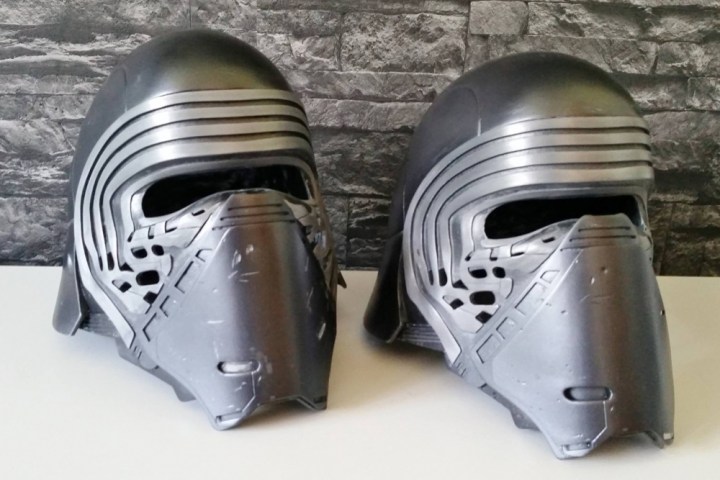
Daley developed the highly-detailed helmet as part of his costuming business, JJ Industries. Working in the 3D CAD design software Solidworks, it took him five weeks to develop, test, and refine the helmet. During the process, he created four physical dome prototypes and spent over 100 hours on the design alone. All this work paid off as the resulting helmet looks outstanding.
Daley made a short run of 40 helmets which completely sold out in a mere matter of minutes. Now, Daley decided to make his STL models available for anyone to download from the 3D object repository, MyMiniFactory.com. Fans are allowed to remodel the helmet and even sell prints of the design as long as Daley is credited as the original creator. For the ultimate Halloween costume, you can pair the helmet with the Ren-inspired robe fabric which Daley also sells through his JJ Industries costuming business.
Star Wars: The Force Awakens is the 7th installment in the main Star Wars film series and the first film in the third Star Wars trilogy. Produced by Lucasfilm and J.J. Abrams’ Bad Robot Productions, the film will be released globally by Walt Disney, which acquired Lucasfilm a few years ago. It will premiere in Los Angeles on December 14, 2015 before debuting in theaters in the U.K., U.S., Canada, and parts of Europe between December 16 and 18.
Editors' Recommendations
- 3D printed cheesecake? Inside the culinary quest to make a Star Trek food replicator
- Need a last-minute Halloween costume? Check out these 3D-printable getups
- The best 3D printers under $500
- The future of making stuff: Inside the evolution of 3D printing with Formlabs
- Wild new 3D printer makes parts by sending titanium particles supersonic





